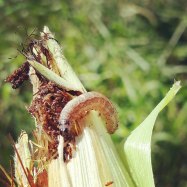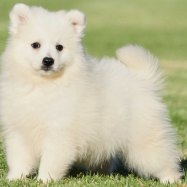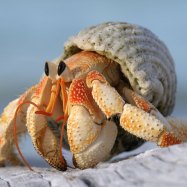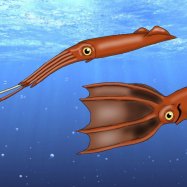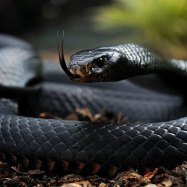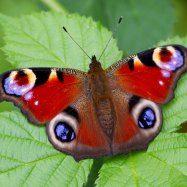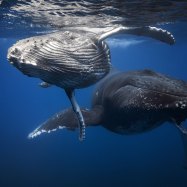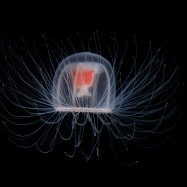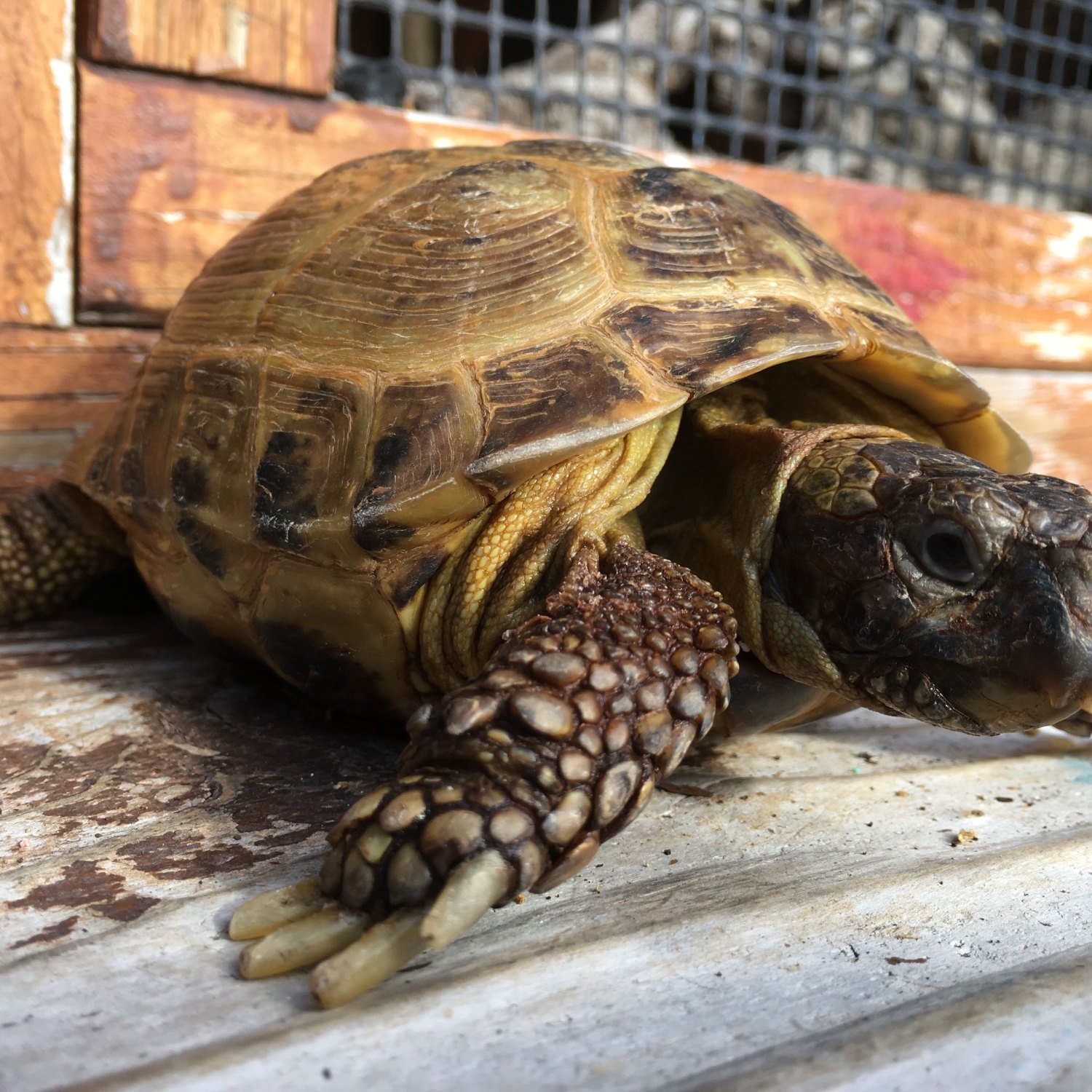
Russian Tortoise
20-25 cm (8-10 inches)
Meet the Russian Tortoise, a fascinating animal from the Testudinidae family. Found in Eurasia, these cute creatures have a dome-shaped shell and can grow up to 8-10 inches in length. They make great pets due to their small size, docile nature and easy care requirements. Whether you're a beginner or experienced pet owner, the Russian Tortoise is a great addition to any home.
Animal Details Summary:
Common Name: Russian Tortoise
Kingdom: Animalia
Habitat: Grasslands, Steppes, Deserts
The Resilient Russian Tortoise: Surviving in Harsh Environments
Imagine a world without technology, without modern comforts, without the convenience of Wi-Fi or cell phones. This may seem like a distant past or a future dystopia to us, but for the Russian tortoise, it is the everyday reality. These creatures have been thriving and surviving in some of the harshest environments on Earth for thousands of years. Their resilience and adaptability have intrigued scientists and fascinated animal lovers all over the world Russian Tortoise. In this article, we will delve into the world of the Testudo horsfieldii, commonly known as the Russian tortoise, and discover what makes them such remarkable creatures.Evolution and Classification
Before we dive into the world of the Russian tortoise, let's take a step back and understand where they fit in the animal kingdom. The Russian tortoise belongs to the kingdom Animalia, which includes all animals. Within this kingdom, they belong to the phylum Chordata, which includes animals with a spinal cord. Further, they are classified under the class Reptilia, which includes all reptiles. Within this class, they are part of the order Testudines, which includes all turtles and tortoises. Finally, they belong to the family Testudinidae, which includes all land-dwelling turtles and tortoises. These classifications may seem like a mouthful, but they are essential in understanding the Russian tortoise and its place in the natural world.Appearance and Physical Characteristics
The Russian tortoise may not be the most colorful or flamboyant reptile, but it has a unique charm that captivates many Red Eyed Tree Frog. They have a dome-shaped shell that varies in color from yellow-brown to dark brown, depending on their habitat. The shell is not only their armor but also their home. Within the shell, they can retract their head, legs, and tail for protection, making it challenging to attack them. Their shell is made up of fused bones that provide them with the necessary strength and resilience to survive in their natural habitat. Russian tortoises have four short legs, a small head, and a long tail that they use to store fat reserves.Habitat and Adaptability
Russian tortoises have an impressive geographical distribution, stretching from Russia, Central Asia, Iran, Afghanistan, China, to Pakistan. They are found in a variety of landscapes, including grasslands, steppes, and deserts. These environments may seem barren and harsh to us, but for the Russian tortoise, it is their home. What makes them truly remarkable is their adaptability to these environments. These creatures can withstand extreme temperatures, from scorching heat to freezing cold. They have adapted to live in a world with very little water, and they have developed ways to conserve water and stay hydrated. Their resilience and ability to survive in some of the harshest environments on Earth have made them a popular pet in various parts of the world.Feeding and Diet
As herbivores, Russian tortoises mostly feed on plants, including wildflowers, grasses, and weeds. In captivity, they can be fed a variety of leafy greens and vegetables, such as collard greens, romaine lettuce, and spinach. It is essential to feed them a well-balanced diet with the right ratio of calcium, fiber, and nutrients. They have a relatively slow metabolism, and overfeeding or unhealthy diets can lead to health problems. In the wild, they have the advantage of being able to forage for food over large areas, while captive tortoises may become overweight if they do not receive the right care.Behavior
The Russian tortoise is a solitary animal and usually only comes together with others of its species during the breeding season. They are active during the day and will often bask in the sun to regulate their body temperature. They have a unique behavior of digging burrows in the ground for shelter and protection. These burrows can be as deep as a few feet and provide them with a safe place to rest and regulate their body temperature, especially during extreme weather conditions. They are relatively solitary and will often defend their territory from other tortoises, particularly during the breeding season.Reproduction and Survival
Female Russian tortoises lay eggs once a year, typically between May and July. They can lay up to six eggs in a clutch, and the incubation period lasts around two to three months. In the wild, only a small percentage of these eggs will hatch and survive to adulthood. Despite these odds, the Russian tortoise has managed to survive and thrive in its natural habitat for thousands of years. This is a testament to their resilience and adaptability in the face of harsh environments and challenges.Conservation Status
The Russian tortoise is listed as Vulnerable on the International Union for Conservation of Nature (IUCN) Red List. This is due to the increasing demand for these creatures as pets, resulting in illegal poaching and trafficking. Additionally, habitat loss and degradation due to human activities, such as farming and urbanization, have also contributed to their decline. It is crucial to remember that these creatures have been thriving in the wild for thousands of years without any human intervention. It is our responsibility to ensure that they continue to do so for generations to come.The Resilient Spirit
The Russian tortoise may not be the most flashy or charismatic animal out there, but it is one that commands respect and admiration. They have managed to thrive in some of the harshest environments on Earth, adapting to extreme temperatures, droughts, and predators. Their resilience and survival instincts are truly remarkable and is something we can all learn from. As we continue to face challenges in our own lives and the world, the Russian tortoise serves as a reminder of the unbreakable spirit of life and the will to persevere.In conclusion, the Russian tortoise is a resilient and adaptable creature that has managed to survive and thrive in some of the harshest environments on Earth. From their unique physical characteristics and behavior to their impressive adaptability and survival instincts, they are truly remarkable animals. As we continue to learn more about these creatures and their place in the natural world, we must also do our part in ensuring their conservation and protection for future generations to appreciate and learn from. Let us celebrate the resilience of the Russian tortoise and honor their place in our world.

Russian Tortoise
Animal Details Russian Tortoise - Scientific Name: Testudo horsfieldii
- Category: Animals R
- Scientific Name: Testudo horsfieldii
- Common Name: Russian Tortoise
- Kingdom: Animalia
- Phylum: Chordata
- Class: Reptilia
- Order: Testudines
- Family: Testudinidae
- Habitat: Grasslands, Steppes, Deserts
- Feeding Method: Herbivorous
- Geographical Distribution: Russia, Central Asia, Iran, Afghanistan, China, Pakistan
- Country of Origin: Russia
- Location: Eurasia
- Animal Coloration: Yellow-brown to dark brown
- Body Shape: Dome-shaped shell
- Length: 20-25 cm (8-10 inches)
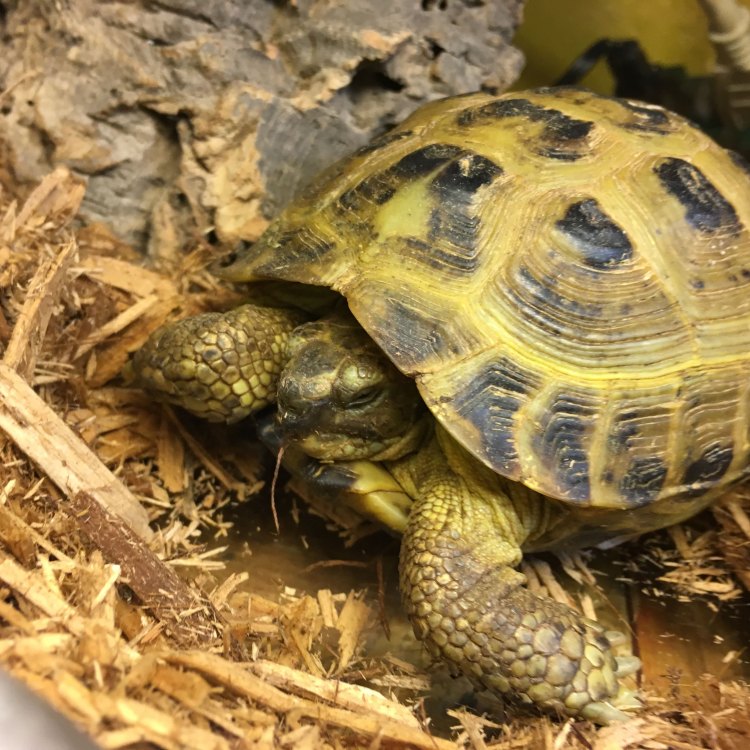
Russian Tortoise
- Adult Size: 20-25 cm (8-10 inches)
- Average Lifespan: 50-75 years
- Reproduction: Sexual
- Reproductive Behavior: Males court females by head bobbing and circling
- Sound or Call: Does not produce sound
- Migration Pattern: Non-migratory
- Social Groups: Solitary
- Behavior: Diurnal and terrestrial
- Threats: Habitat loss, illegal pet trade, agricultural activities
- Conservation Status: Vulnerable
- Impact on Ecosystem: Seed dispersal
- Human Use: Pet trade, meat, and shell
- Distinctive Features: Dome-shaped shell, yellow-brown coloration, hinged plastron
- Interesting Facts: Russian tortoises are excellent burrowers and hibernate underground during winter
- Predator: Birds of prey, foxes, dogs, and humans
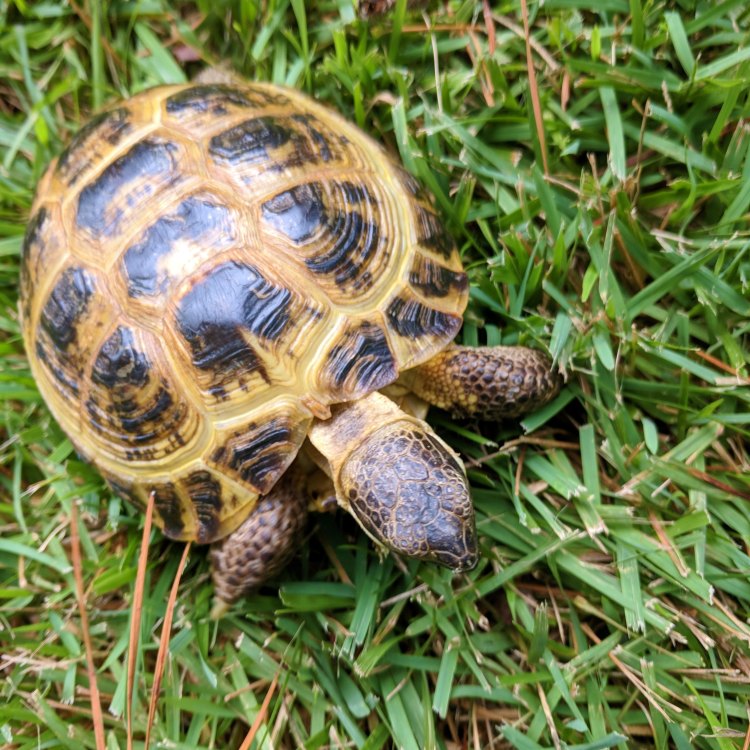
Testudo horsfieldii
The Remarkable Russian Tortoise: A Long-Lived and Endangered Species
When thinking of tortoises, one might picture the giant Galapagos tortoise or the colorful Indian star tortoise. But, have you ever heard of the Russian tortoise? Despite its name, this species is not native to Russia at all. In fact, it is found in Central Asia, specifically Uzbekistan, Afghanistan, and Iran.The Russian tortoise, also known as the Central Asian tortoise or Horsfield's tortoise, is a small species of tortoise that belongs to the Testudinidae family PeaceOfAnimals.Com. It is well-known for its impressive lifespan, small size, and unique reproductive behavior. In this article, we will delve into the fascinating world of the Russian tortoise and explore its distinctive features, behavior, and role in the ecosystem.
Size and Lifespan
The Russian tortoise is one of the smallest species of tortoises, reaching an adult size of only 20-25 cm (8-10 inches) in length. This makes them an ideal pet for those who don't have much space in their homes. Despite their small size, they are known to live exceptionally long lives, with an average lifespan of 50-75 years. Some individuals have even been reported to live up to 100 years!Reproductive Behavior
Like many other tortoise species, the Russian tortoise follows sexual reproduction. Mating usually occurs between March and June, with males actively seeking out females for courtship. The males display their interest in the females by head bobbing and circling around them.Once the female is ready to lay eggs, she digs a hole in the ground with her hind legs and deposits 2-5 eggs Red Handed Tamarin. The eggs take around 100-120 days to hatch, and the hatchlings are independent from birth. It is worth noting that the sex of the hatchlings is not determined by genetics but by the temperature at which the eggs were incubated.
Sound or Call
Unlike some other tortoise species, the Russian tortoise does not produce any vocalizations. This may be due to their solitary nature and lack of communication needs.Migration Pattern
The Russian tortoise is a non-migratory species, meaning they do not migrate to different areas throughout the year. They are mostly sedentary and can occasionally be found traveling short distances in search of food and water.Social Groups
In the wild, Russian tortoises are known to be solitary creatures, only coming together for breeding purposes. However, in captivity, they can be kept in groups without any issues as long as there is enough space and resources for each individual.Behavior
Russian tortoises are diurnal, meaning they are active during the day, and like most tortoises, they are terrestrial and spend most of their time on land. They are excellent burrowers, digging deep into the ground to escape the harsh hot and cold temperatures of their natural habitat. This behavior also serves as protection against predators.During colder months, Russian tortoises hibernate underground to conserve energy and survive the harsh weather. They can hibernate for several months at a time, relying on the stored fat in their bodies for sustenance.
Threats and Conservation Status
Despite their long lifespan and impressive reproductive abilities, Russian tortoises face many threats in their natural habitat. The major threat is habitat loss due to agricultural activities and urbanization. As humans continue to expand their presence in Central Asia, the tortoises are losing their natural habitat, making them vulnerable to predators and other dangers.Moreover, Russian tortoises are also victims of the illegal pet trade due to their small size, long lifespan, and unique appearance. Many individuals are captured from the wild, causing a decline in their population. Their meat and shells are also highly valued in some cultures, making them targets for hunting.
As a result of these threats, the International Union for Conservation of Nature (IUCN) has listed the Russian tortoise as a vulnerable species. It is essential to raise awareness about their endangered status and take steps to protect them in their natural habitat.
Impact on the Ecosystem
Every species plays a crucial role in maintaining a balanced ecosystem, and Russian tortoises are no exception. As they are herbivores, they primarily feed on vegetation like grasses and shrubs. This makes them important seed dispersers, aiding in the growth of plants and maintaining plant diversity in their habitat.Furthermore, their burrowing behavior also plays a vital role in the ecosystem. By digging tunnels, they create spaces for the growth of plants and aerate the soil, promoting the growth of healthy vegetation. Their burrows also provide shelter for other animals, such as reptiles, insects, and small mammals.
Human Use
The Russian tortoise has been used by humans for various purposes throughout history. As mentioned earlier, its meat and shells are highly valued in some cultures. In some areas, they are also used in traditional medicine, believed to have healing properties.Moreover, as they are small and have a long lifespan, they are popular pets in the exotic pet trade. However, it is essential to be aware of the impact of the pet trade on their population and only obtain them from ethical and responsible sources.
Distinctive Features
The Russian tortoise has several distinctive features that make it stand out among other tortoise species. Its most notable feature is its dome-shaped shell, which is slightly elongated and relatively flat on top. The shell is made up of different plates, called scutes, and has a yellow-brown coloration, with darker splotches and bands. This coloration helps them blend into their natural environment and acts as camouflage against predators.Another unique feature of the Russian tortoise is its hinged plastron, which allows them to close their shell almost completely for added protection. This is an important adaptation, as they are small and defenseless against predators.
Interesting Facts
Did you know that Russian tortoises are excellent burrowers? Their strong front legs and sharp claws allow them to dig deep into the ground, creating complex underground tunnels and chambers where they can shelter, hibernate, and even give birth to their young.During hibernation, Russian tortoises can slow down their metabolism and survive without food or water for long periods. This impressive adaptation helps them survive harsh conditions and conserve their energy.
Predators
Despite their sturdy shell and burrowing abilities, Russian tortoises still have natural predators, including birds of prey, foxes, and dogs. However, the biggest threat to their survival is humans. Habitat destruction and illegal hunting have contributed significantly to their decline in the wild.As responsible individuals, we must work together to protect and conserve these unique and fascinating creatures so that they can continue to live and thrive in their natural habitat.
Conclusion
The Russian tortoise may be small in size, but it has a big impact on its ecosystem and the people who cross paths with it. Its longevity, unique features, and behavior make it an interesting and admirable species, worthy of our attention and protection. As we continue to learn more about these incredible creatures, let us also do our part in ensuring their survival for generations to come.
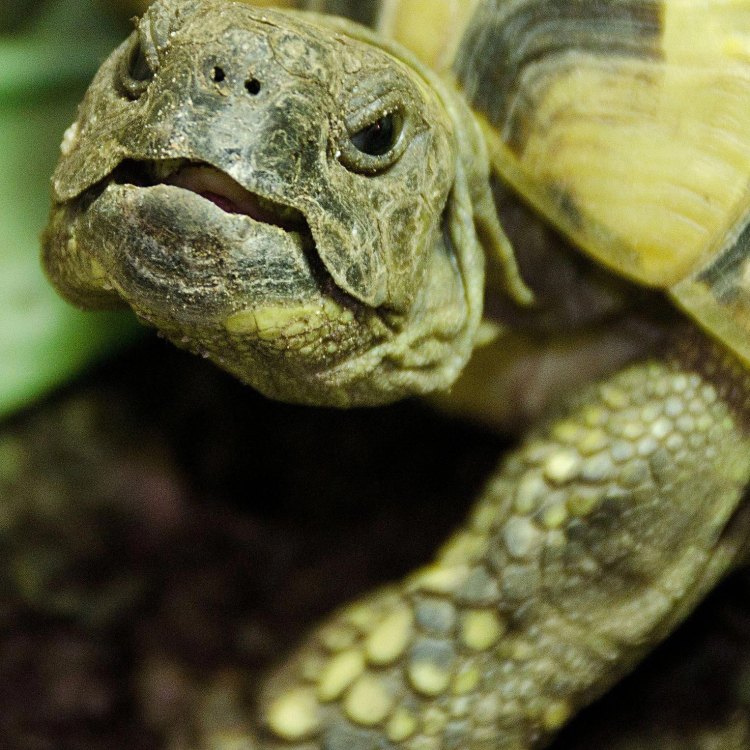
The Resilient Russian Tortoise: Surviving in Harsh Environments
Disclaimer: The content provided is for informational purposes only. We cannot guarantee the accuracy of the information on this page 100%. All information provided here may change without prior notice.

